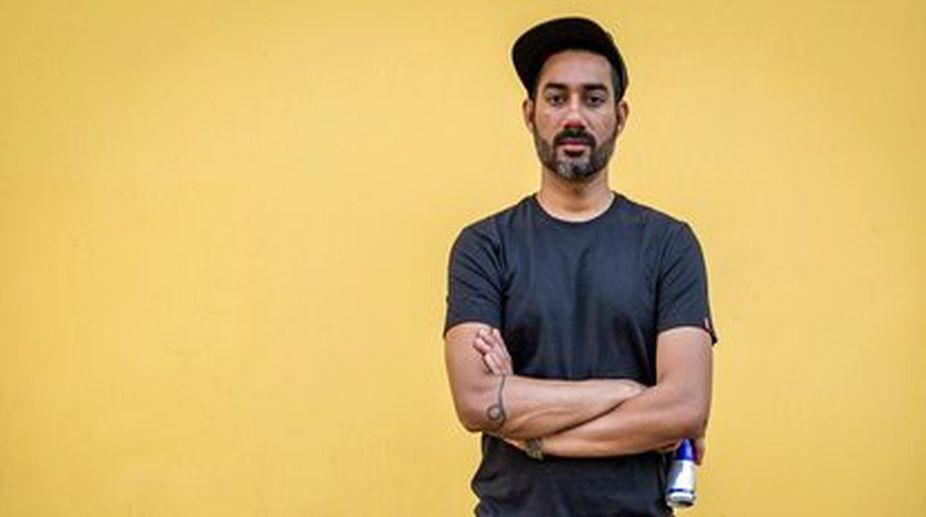Ritviz, Nucleya in first collab for ‘Baaraat’, NFT marketplace
Ritviz and Nucleya have come together for the first time to collaborate for the album 'Baaraat' as they released their first single 'Sathi'.

Nucleya (Photo: Twitter)
Once he touches the mixing consoles, even the biggest nerds cannot keep their feet to the ground. He comes into concerts like the wild wind, sweeping everyone along with his tunes.
Yet his humble approach has driven his signature moves like launching albums at the Ganpati procession or the NSCI Stadium. He has performed at numerous international music festivals including Glastonbury, Edinburgh Fringe Festival, Lille 3000 and the Electron Festival.
According to him, when he gets up before thousands of fans, he is no more Udayan Sagar. He becomes Nucleya. Ride to the roots, a Red Bull media house production, is a documentary on the Indian music producer Nucleya.
Advertisement
“Earlier this year, Red Bull approached me about doing a documentary covering my story so far and giving fans an insight into how long it’s actually taken me to reach here. It’s been a 20 year struggle and I think this documentary does a great job of conveying it in a very honest light,” he says.
The movie shows him going back to Ahmadabad, where he has grown up. There he reminisces his days with his family, his college where he met Mayur and gradually the Bandish Projekthappened. Against the backdrop of him and his family’s voice reminiscing happy memories, the still pictures, his days with Mayur, comes to life.
He recalls the nice feelings he had, always waking up to songs his father used to play and how it continued playing in the background almost throughout the day. His father also kept intact a little box full of items with which he would do jamming since his college days. Like most, Nucleya never liked to go to college or study. He met Mayur in college who also shared similar interests and they would do jamming sessions together.
Bandish Projekt became a huge success as their popularity went beyond Ahmadabad and spread to metropolitans like Delhi and Bombay. But shifting to Dubai became the beginning to their downfall. They grew apart in opinions and their practice sessions weren’t fun anymore.
Leaving the Bandish Projekt and Dubai, he was stripped of all livelihoods and was clueless where to start from. He didn’t have money to pay the bills or rent and was also married by that time to Smriti Choudhary. “When Bandish Projekt broke up, it was a really tough time for me.
My wife worked while I made music and tried to find new sound which ultimately became Nucleya. Without her support Nucleya would never have been possible,” he shares.
His album covers, all of which has been designed by Choudhary, are inspired from the everyday masks that we see around the streets of India.
Being digital with bright hues, they pose a really vibrant and catchy look. Nucleya started walking the streets and listening to the different music around him. Not only the street musicians but everyday sounds that revolve us.
Like that of the radio announcer that we can hear playing in an auto or a cab, the sounds of clinking at the trinket shops and anything that goes around in the street. Since then he had to look no further for inspiration. He started working with these forms and that is how Nucleya happened.
In his opinion, “I don’t think about music in terms of genres. Whatever comes naturally to me, I incorporate that into my music– be it a beat, or a melody, or even a lyric. I had moved to Delhi to look for better opportunities. When I got there, the work I found was as the resident DJ at Kitty Su. I didn’t like playing Top 40 commercial music every night, so I literally reached out to every agency in the country.
OML was the only company to come back with a positive response, and our relationship grew from there,” he said. Nucleya never refuses his fans for autographs or selfies.
To him, “It feels extremely humbling. I worked towards this for so long that to be able to actually stop for a moment and look back and see the journey has been amazing. Every step and every turn we always tried to do something different, I think it’s all gradually added up to where we are today.”
Advertisement